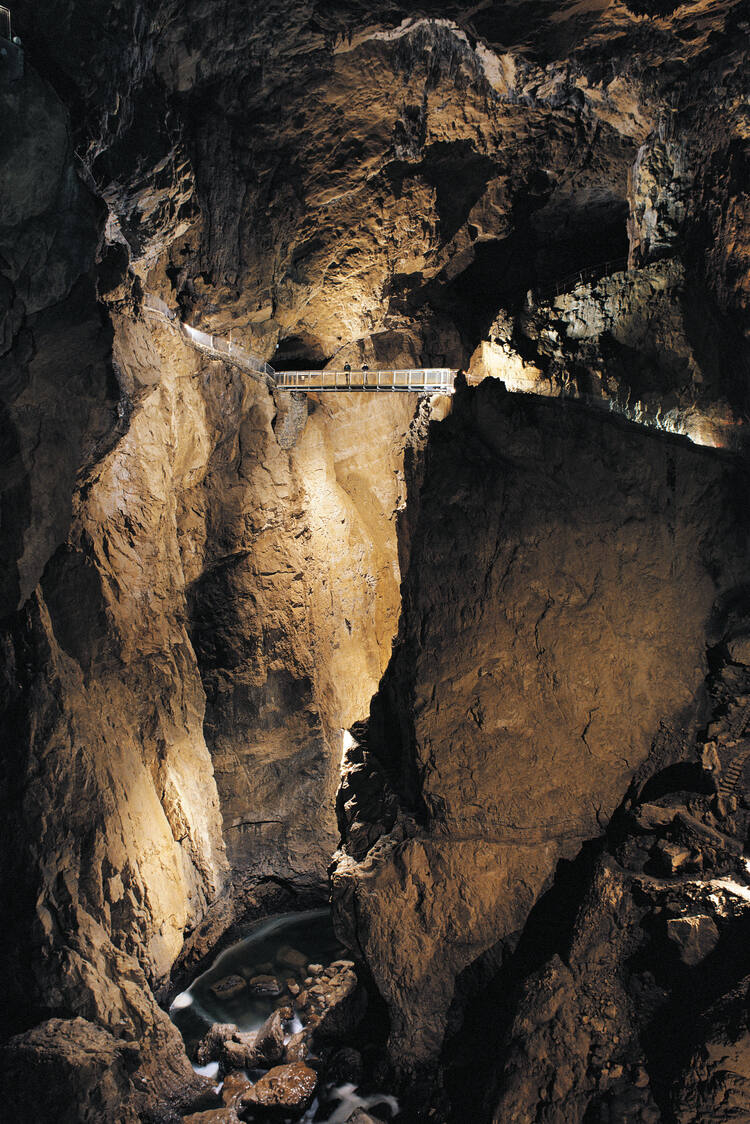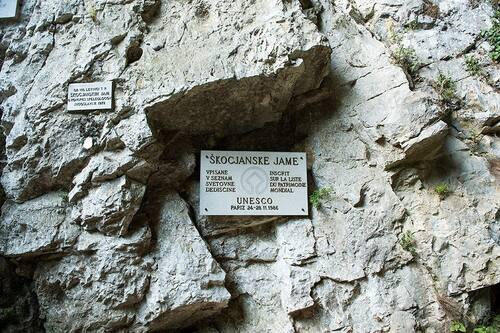Škocjan Caves
Slovenia- Škocjan Caves
These caves interested me the most when searching for which sites in Europe I should visit. Slovenia is not that far from Wien. It took me about five hours to reach Ljubljana, Slovenia (the capital) by bus. From Ljubljana, I took a train to Divaca and then took a 40 minute footpath to the caves. The cave tour lasted an hour and half. Thankfully, I already had a ticket waiting for me because of contacts I made with the cave administration. The cave tour was in English so I was able to understand everything. After the cave tour ended, I went back on the foot path to go to the train station. It started pouring down rain and my shoes and socks were soaked. To put it mildly, I was miserable. I did not arrive at my Airbnb in Ljubljana until 10:15 PM. Most importantly, I was very satisfied with my cave tour and I learned a lot from the experience.
* Unfortunately, I was not permitted to take pictures during the cave tour. The pictures used on this blog post are courtesy of Škocjan Caves website and the UNESCO Website.
Škocjan Caves- The Škocjan Caves are considered to be the most important underground phenomenon in Slovenia as well as one of the best caves in the world. This stunning cave was formed by the river Reka which flows around 50 km above ground and then sinks into the karst underground. There are two main parts of the cave: "The silent cave" and "The Murmuring cave." One can easily guess that the murmuring cave is the one where the River Reka flows through and the silent cave does not have a river.
The foot bridge that crosses the Murmuring Cave

An interest form of stalagmites
What was very interesting to me during the tour were all the traces of past exploration that started around the 19th century. Following the Reka river led explorers to this massive underground cave. Tiny steps can be seen along the cave wall that were used by these explorers. Additionally, hanging ladders made only from blocks of wood and wire are stretched across parts of the cave. How these explorers did not die from these methods of transportation, I have no idea. Also quite interesting was in the "Silent Cave" is one of the worlds largest stalagmites, aptly titled "Giant" and is over 250,000 years old.
River Reka
Why was Škocjan Caves put on the UNESCO Natural World Heritage List?
Škocjan Caves was included on not only the Natural World Heritage List but also the Cultural World Heritage List in 1986. As my project solely deals with the Natural part of the sites, I will only be discussing the reasons of the cave's induction on the natural list. These caves fulfill two of the criteria to become a Natural World Heritage Site: "to contain superlative natural phenomena or areas of exceptional natural beauty and aesthetic importance" and "to be outstanding examples representing major stages of earth's history, including the record of life, significant on-going geological processes in the development of landforms, or significant geomorphic or physiographic features." The Škocjan Caves are well conserved localities for karst topography. Impressive are the cave's underground canyon as well as the stalagmites and stalactites that were formed dripping of rain water on the limestone.
UNESCO Plaque outside the natural entrance to the cave
The Škocjan Caves are publicly owned and the surface land above is divided into public and private sectors. Several private and public acts work together to maintain and preserve the Škocjan Caves. This cave had stricter policies than Jasovska Cave in Slovakia. You are not allowed to take pictures, eat or drink, and most importantly- you are not allowed to touch anything. We were strictly told to not touch the limestone or the dripping water on the stalagmites or stalactites, as this can "kill" them. We have a natural oil on our hands. When person after person touches these stalagmites or stalactites, the dripping water will just slip of the limestone and therefore, will stop growing. Škocjan Caves is also partnered with other organization such as European's Union's Natura and the Karst Biosphere Reserve under UNESCO's Man and the Biosphere Programme. I learned that these caves are well preserved, but as will be mentioned in the next section, there are just some things that are out of these organization's control that can damage the caves.
Stalagmites and Stalactites
As with all these natural sites, they are far from public life. Over population is not an issue. Additionally, the amount of visitors is limited for each tour so that the tour guide does not have to be cautious of having no control over the tourists. There are many tourists that come to this cave but there is no over-tourism.
On the other hand, pollution does play an issue in the natural state of the Škocjan Caves. As mentioned before, the Reka River was the main source that carved out the Škocjan Caves. The water rushes from above ground, into the cave. Water quality is constantly a challenge, as sewage, agricultural waste, and other external factors can seep into the river water, and eventually flow into the cave. This impacts aquatic life for the many insects that live in the cave. The drip water from the ceiling of the cave that forms the stalagmites and stalactites can also be polluted and will "kill" these figures. Pollution and sewage can be prevented, however, natural causes cannot.
The main natural hazard that poses a threat to Škocjan Caves is flooding. After much rainfall, the Reka River rises and covers parts of the cave that should not be covered with water. During the tour, our guide pointed out a marker that depicted where the water line raised to in 1968 during a flood. The river rose over 100 meters. This flooding cannot be controlled.
* Information gathered from the tour, the visitor's center, and the UNESCO website



Comments
Post a Comment